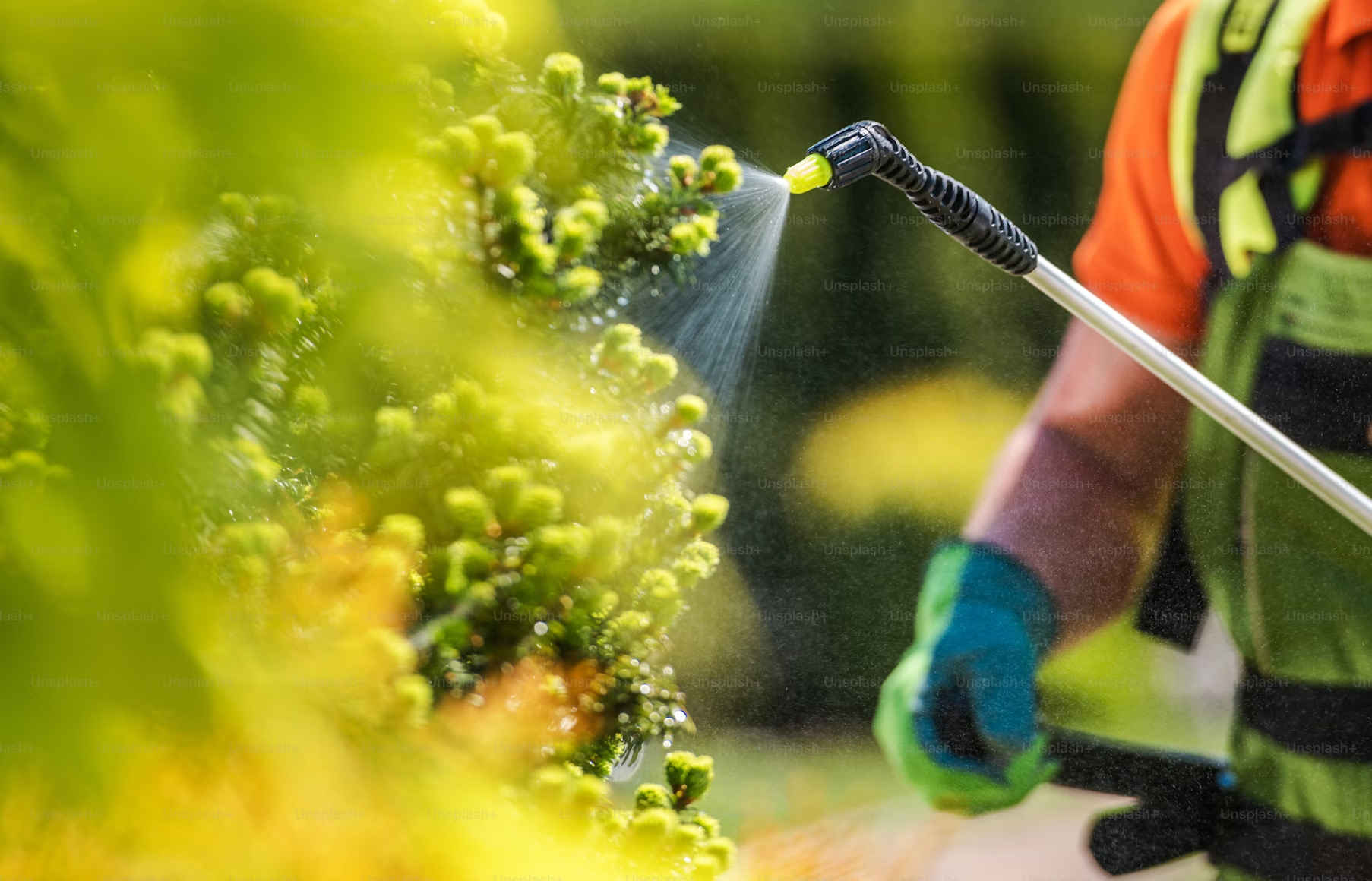There are two types of sprays that we use in our gardens, contact sprays which sit on the surface of the plant’s foliage and systemic ones which are absorbed into the plant and works from inside the plants to protect or control.
These may either be insecticide, fungicide or herbicide.
Contact sprays like Wallys Liquid Copper are washed off with rain unless they are held in place with a sticker.
Without a sticker then after the rain you have to re-apply the protection and most fungal diseases are splashed up from the soil under the plant when it is raining. For instance Curly Leaf disease in stone fruit.
If the copper is in place while it is raining then no need to apply after rain has stopped and hopefully the disease spores that are splashed onto the plant with the rain are deactivated by the copper in place.
The best thing to add to your contact sprays is Wallys Raingard.
Raingard is an Organic or Natural biodegradable terpenic polymer. (Made from Pine Resin).
Raingard does four jobs when mixed with most garden sprays including herbicides.
Like similar products eg Sprayfix, Raingard spreads and sticks the spray particles over foliage giving a better coverage.
But Raingard goes two steps further and used at the recommended rate of only 1 ml per litre of spray it will RAIN-PROOF the spray for up to 14 days in average conditions and average rainfall.
This means that the particles of spray are being slowly released from the film Raingard has over the foliage over the 14 days.
Raingard will dry with the spray in normal conditions of between ½ hour to an hour-and-a-half.
Because Raingard locks spray particles on foliage for 14 days, then on food crops, any toxic sprays combined with Raingard should allow the 14 days withholding period or if the toxic spray has a longer withholding period; then the longest period would apply.
If using Raingard with Neem products or sulphur sprays, then as neither Neem or sulphur are toxic, the withholding period is not important.
But if using a Copper spray, a 14 day period should be applied to food crops as copper is toxic.
Raingard saves you time and money as it removes the need to re-spray every time it rains or you water.
Raingard acts also as a bridge for systemic sprays and greatly aids these types of sprays entry into the foliage.
Used with herbicides it will increase the effectiveness of the weed killer, often resulting (from trials) in a 50% better result, when compared to not using Raingard.
Raingard is more effective (to my knowledge) than Pulse to aide Roundup into shiny or hairy leaf plants.
It is interesting to note that Raingard used with say Roundup you can reduce the amount of Roundup needed to get the same results. Instead of 10 ml of Roundup to the litre, try 5 ml and Raingard.
Some weeds may need the stronger solution but most will die from the suggested combination.
It is also interesting to note that another one of our organic products, Mycorrcin Plus, if added to the mix of Roundup and Raingard will also assist with a better and now faster kill as the Mycorrcin will assist in the breakdown of the dying foliage, cleaning up the area quicker.
You might like to try this as a ‘less harmful to the environment’ weed killer, 3 ml of Roundup, 5 ml of Mycorrcin Plus and 1 ml of Raingard into one litre of water.
You should find that this will kill most weeds without having to increase the amount of Roundup.
As the Mycorrcin stimulates the soil life and beneficial fungi, it off-sets the damage that herbicides do to the soil and worms.
Raingard is available in 100 ml and 250 ml bottles.
It is supplied with a 1 mil pipet.
If you have never used a pipet before it is a scientific way to get a fairly accurate measurement of a liquid. A pipet is a long thin tube with a bubble on top, like an eye dropper.
The thin tube has little gradations on it at quarter a mil, half a mil, three quarters, and 1 mil just under the bubble.
You place the tube into the Raingard concentrate and after squeezing the bubble, release the pressure till the Raingard reaches the amount you want to use and remove the tube.
Simply squirt the contents into the spray you are making up. If you want 5 mils for 5 litres of spray then you can repeat 5 times. In cool weather best to put the Raingard bottle into a jug of hot water so it is easier to measure.
It’s cousin is Wallys Vaporgard which is a frost protector, sea spray and wind burn protector, stress guard protection, assists in better colour and flavour to fruit, extends self life of fruit and produce, reduces water requirements for plants in summer and lasts as a film over sprayed foliage for about 3 months.
I saw a comment the other day….The un seasonal cold weather is due to Global Warming… Now ‘aint that a good reason?
Image credit: Getty Images
